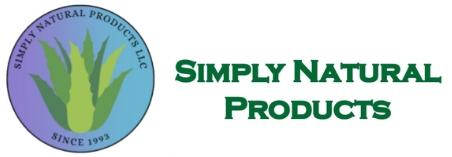By Alfred Garbutt, D.C.
Aloe vera is a plant of African origin that is related to the lily. Aloe vera means true aloe in Latin. The healing benefits of Aloe vera have been recorded throughout the world for thousands of years. The American medical and pharmaceutical communities most likely have not accepted it because it can’t be patented nor a prescription written for it. Nevertheless, there are a significant number of records and research articles about the benefits of Aloe vera.
I have been studying therapeutic nutrition for over 26 years and have frequently read about these benefits. There was the occasional stomach upset in a child that would respond but overall I witnessed little results with the Aloe products available. I didn’t want to waste people’s money so I stopped recommending the internal use of Aloe vera until this past year.
My continual study of therapeutic nutrition brought me across vital information as to why the previous products had little, if any benefit.
They were lacking or low in a key active ingredient that was necessary for the body to heal itself. This active ingredient is called mucopolysaccharide (MPS), which is a long chain of sugars that bond with water. In the body this type of natural chemical glues cells together, lubricates joints and enhances the immune system.
Over 95% of the Aloe products on the market are either diluted or improperly processed. Using only the inner gel of the Aloe vera leaf provides a lower concentration of MPS. The outer leaf and rind have 200% more of the active ingredient than the inner gel. Processing the plant with high heat also destroys many of the beneficial ingredients of Aloe. The best products should be cold processed using the whole leaf with the aloin removed. Aloin is the irritating chemical in the plant that can cause diarrhea or intestinal cramping.
Ivan Danhof, M.D., Ph.D. is considered the leading expert in the world on Aloe vera. Dr. Danhof states, “The only materials shown to have beneficial effects in scientific studies are attributable to the polysaccharides.” Experts in the subject recommend between 600 – 1,200 mgs of MPS per day for a healthy adult. Unhealthy people would commonly use 1,200 – 3,000 mgs per day, those with severe diseases using much higher amounts.
The vast majority of Aloe vera products available in the USA have 0 – 1,400 mgs MPS per liter. Even with the best of these, you would need to drink one liter each day to get enough of the mucopolysaccharides. When I found a product that was 10 times the concentrate with over 12,000 MPS per liter, I finally saw the results with my patients that I expected and wanted. Whenever you buy Aloe vera products for internal use, always check how much MPS is in the bottle. If you must drink 1-3 liters per day to equal 3-4 ounces of a 10 times concentrate then that cheaper bottle is not truly the most economical for what you get.
A few of the body problems that doctors are researching or using Aloe vera for are: mouth and stomach ulcers, intestinal disorders such as irritable bowel, to expel worms, sleep disorders, chronic vaginal irritation, inflammation associated with diabetes, digestive problems, viral infections, excess yeast (candida) in the bowel and stressed immune system.
There are medical doctors doing research with cancer and AIDS patients taking very large doses of concentrated Aloe vera and observing promising responses.
A 10 times more concentrated Aloe gel can also have remarkable benefits for the skin when applied topically. Aloe can penetrate deep into the tissues where it can moisturize, have antiseptic properties, stimulate the growth of new healthy cells and have a cleansing detoxifying effect. A morning and evening application of pure Aloe gel can be a simple yet beneficial procedure towards slowing down the deterioration of your skin, especially if you live in Southern California which is technically a desert. We just artificially make it look green by pumping in a lot of water during the summer months.

